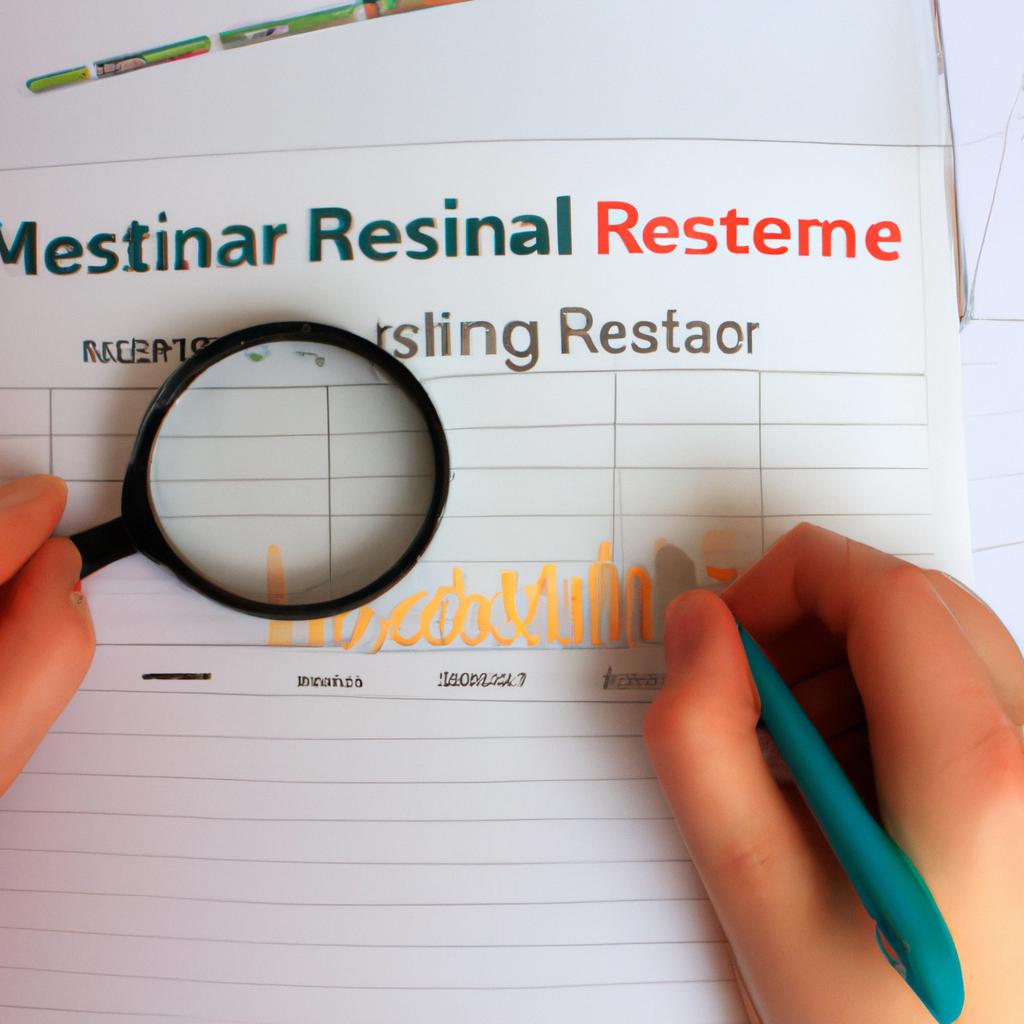Wholesale properties, a popular investment strategy in the real estate business, offer an opportunity for investors to purchase properties at significantly discounted prices and resell them for profit. This article aims to explore various investment strategies associated with wholesale properties, providing insights into how these strategies can be effectively implemented in the competitive real estate market.
To illustrate the potential benefits of engaging in wholesale property investments, consider the case of a hypothetical investor named John. John identifies a distressed property that is listed well below its market value due to significant repairs needed. Recognizing this as a prime opportunity, he purchases the property at a fraction of its actual worth through negotiations with motivated sellers or foreclosure auctions. Subsequently, John invests additional capital into renovating and upgrading the property before placing it back on the market at its true value. By utilizing strategic pricing and marketing techniques, John successfully sells the renovated property within a short period, generating substantial profits from his initial investment.
This introductory passage provides an overview of wholesale properties as an attractive investment avenue in real estate and introduces readers to one example that exemplifies both the concept’s viability and potential profitability. The article will delve deeper into different approaches employed by investors when dealing with wholesale properties and examine their merits in achieving long-term financial success in the dynamic real estate market.
One common approach to wholesale property investing is known as the “fix and flip” strategy. This involves purchasing distressed properties at a low price, making necessary repairs and improvements, and then selling them quickly for a profit. The key to success with this strategy lies in accurately assessing the costs of renovations and determining the optimal sale price to attract buyers while still maximizing profits.
Another popular strategy is wholesaling, where investors act as intermediaries between motivated sellers and potential buyers. In this method, investors secure contracts to purchase properties from sellers at a discounted price, and then assign or sell those contracts to other investors or end buyers for a fee. Wholesaling requires strong negotiation skills, market knowledge, and an extensive network of contacts within the real estate industry.
Additionally, some investors opt for long-term rental strategies with wholesale properties. Instead of flipping or wholesaling for quick profits, they purchase discounted properties with the intention of holding onto them as rental units. This approach can provide steady cash flow through rental income while also benefiting from potential appreciation over time.
It is important to note that successful wholesale property investing requires thorough research and due diligence. Investors must carefully analyze market trends, evaluate property conditions, estimate repair costs accurately, and consider factors like location and demand before making investment decisions.
In conclusion, wholesale property investments offer significant opportunities for real estate investors to acquire properties at discounted prices and generate profits through various strategies such as fixing and flipping, wholesaling, or long-term rentals. By understanding these strategies and implementing them effectively in the competitive real estate market, investors can achieve long-term financial success in their investment ventures.
Understanding Wholesale Properties in Real Estate
Wholesale properties play a crucial role in the real estate investment industry. These are properties that investors purchase at a discounted price and then sell to other buyers for a profit. To better comprehend this concept, let’s consider an example: Investor A identifies a distressed property that requires significant repairs and is priced well below market value. Recognizing its potential, Investor A purchases the property and proceeds to find another buyer who is willing to pay a higher price after making the necessary renovations.
To delve deeper into wholesale properties, it is important to understand the various strategies employed by real estate investors. Here are four key considerations:
- Market Analysis: Conducting thorough research on local housing markets enables investors to identify areas with high demand but limited supply. This knowledge allows them to target specific neighborhoods where wholesale opportunities may exist.
- Networking: Building strong relationships within the real estate community can provide access to off-market deals, including wholesale properties not listed publicly.
- Due Diligence: Performing comprehensive due diligence ensures that investors assess the potential risks associated with buying wholesale properties. It involves investigating factors such as title issues, liens, or structural problems before finalizing any transactions.
- Negotiation Skills: Effective negotiation skills are instrumental when purchasing wholesale properties at favorable prices. Investors must be able to negotiate with sellers while considering their own financial objectives.
In addition to these strategies, visual aids can help illustrate the impact of investing in wholesale properties compared to traditional methods. The table below highlights some key differences:
| Traditional Investment | Wholesale Property Investment |
|---|---|
| Higher Purchase Price | Discounted Purchase Price |
| Potential Competition | Less Competition |
| Longer Holding Period | Shorter Holding Period |
| Lower Profit Margins | Higher Profit Margins |
By understanding these distinctions, prospective investors can make informed decisions about incorporating wholesale properties into their real estate portfolios.
Transitioning into the subsequent section about “Identifying Profitable Wholesale Properties,” it is essential to develop a systematic approach that maximizes profit potential.
Identifying Profitable Wholesale Properties
In the previous section, we explored the concept of wholesale properties in real estate and how they can be a valuable investment opportunity. To further enhance our understanding, let’s consider an example: Imagine you come across a distressed property that is being sold at a significantly reduced price due to its poor condition or financial distress. This property has great potential for profit if it can be renovated and resold at market value.
Now that we have grasped the basics of wholesale properties, it is crucial to learn how to identify those with profitable potential. Here are key strategies to keep in mind:
-
Extensive Market Research: Conduct thorough research on the local real estate market to identify areas where demand is high but supply may be limited. Look for neighborhoods experiencing revitalization or upcoming development projects.
-
Networking within the Industry: Build relationships with other investors, wholesalers, agents, and professionals involved in the real estate industry. Attend networking events and join online communities focused on real estate investing to expand your knowledge base and gain access to off-market deals.
-
Analyzing Property Metrics: Evaluate each property’s metrics such as purchase price, repair costs, ARV (After Repair Value), carrying costs, financing options, and potential rental income. Utilize tools like comparative market analysis reports and cash flow projections to determine whether a particular wholesale property aligns with your investment goals.
-
Due Diligence: Perform comprehensive due diligence before making any investment decisions. This includes conducting inspections, verifying legal documentation, assessing title issues, estimating renovation expenses accurately, and evaluating potential risks associated with the property.
| Key Factors | Importance |
|---|---|
| Location | High |
| Potential ROI | High |
| Renovation Costs | Medium |
| Exit Strategy Options | High |
By effectively employing these strategies when identifying profitable wholesale properties, you can increase the likelihood of a successful investment.
Evaluating Potential Returns on Wholesale Properties
Section H2: Evaluating Potential Returns on Wholesale Properties
Having identified profitable wholesale properties, it is crucial to evaluate their potential returns before making any investment decisions. By assessing various factors that affect profitability, investors can make informed choices and maximize their chances of success. Let’s explore some key considerations when evaluating potential returns on wholesale properties.
Example: Consider a hypothetical scenario where an investor comes across a distressed property in a desirable location. The property requires substantial renovation but has great potential for resale at a higher price once renovated.
When evaluating potential returns on wholesale properties, keep the following points in mind:
- Market Demand: Analyze the current market conditions and assess the demand for similar properties in the area. A strong demand indicates better prospects for selling or renting out the property at favorable prices.
- Renovation Costs: Calculate the estimated costs involved in renovating and improving the property to determine if it aligns with your budget and profit expectations.
- Holding Time: Consider how long you may need to hold onto the property before realizing its full value. Longer holding periods may increase risks and reduce overall profitability.
- Financing Options: Explore different financing options available to finance your purchase and renovations cost-effectively.
To further understand this evaluation process, consider the table below showcasing three hypothetical wholesale properties along with relevant data:
| Property | Purchase Price ($) | Estimated Renovation Cost ($) | Projected Resale Value ($) |
|---|---|---|---|
| Property 1 | 100,000 | 50,000 | 200,000 |
| Property 2 | 150,000 | 70,000 | 250,000 |
| Property 3 | 120,000 | 60,000 | 220,000 |
By comparing these properties based on purchase price, estimated renovation costs, and projected resale value, investors can evaluate their potential returns effectively.
In summary, evaluating potential returns on wholesale properties involves considering market demand, renovation costs, holding time, and financing options. Analyzing these factors alongside a detailed assessment of individual properties will empower investors to make informed decisions regarding their investments in the real estate business. With this evaluation complete, let’s now move on to the next section about negotiating deals for wholesale properties.
Negotiating Deals for Wholesale Properties
Having evaluated potential returns on wholesale properties, it is essential to understand the art of negotiating deals in this particular real estate investment strategy. By employing effective negotiation techniques, investors can secure the best possible terms and maximize their profits.
To illustrate the importance of negotiation skills, let’s consider a hypothetical scenario. Imagine an investor who identifies a distressed property with high profit potential. The seller inherited the property but lacks the time or resources to address its issues. Sensing an opportunity, our savvy investor approaches the seller with a fair offer that takes into account both parties’ interests.
When negotiating deals for wholesale properties, there are key strategies that can significantly impact your success:
-
Establish clear objectives: Before entering any negotiations, define your goals and desired outcomes. Knowing what you want to achieve will help guide your approach and ensure you stay focused throughout the process.
-
Conduct thorough research: Gather as much information as possible about the property, market conditions, and comparable sales in the area. This knowledge will strengthen your bargaining power and enable you to make informed decisions during negotiations.
-
Build rapport and trust: Successful negotiations often depend on establishing a positive relationship with the seller or their representative. Show genuine interest in understanding their needs and concerns while presenting yourself as a credible and trustworthy buyer.
-
Use effective communication techniques: Mastering active listening skills allows you to identify underlying motivations and tailor your offers accordingly. Clearly articulate how your proposal aligns with the seller’s objectives while maintaining professionalism at all times.
| Negotiation Strategies | Description |
|---|---|
| Win-win approach | Seek mutually beneficial solutions that satisfy both parties’ interests |
| Emotional intelligence | Understand emotions involved in negotiations; respond empathetically |
| Creative problem-solving | Think outside traditional boundaries to find innovative solutions |
| Patience | Remain composed even in challenging situations; avoid rushing the negotiation process |
In summary, negotiating deals for wholesale properties requires a strategic and thoughtful approach. By establishing clear objectives, conducting thorough research, building rapport with sellers, and employing effective communication techniques, investors can create win-win scenarios that lead to profitable outcomes.
With successful negotiations under your belt, it’s time to explore the next crucial step in the wholesale property business – marketing and selling these lucrative investments.
Marketing and Selling Wholesale Properties
Imagine a scenario where you have successfully negotiated and acquired several wholesale properties. Now, it is essential to implement effective strategies for managing these investments to maximize your profits. This section will explore key considerations in property management that can help ensure the success of your real estate business.
Firstly, maintaining good relationships with tenants is crucial for sustainable rental income. By providing excellent customer service and promptly addressing any issues or concerns raised by tenants, you can foster positive tenant-landlord interactions. For instance, consider a hypothetical case study involving an investor who purchased multiple residential units as wholesale properties. Through responsive communication channels and regular property maintenance, this investor gained trust from their tenants and experienced high occupancy rates throughout the year.
To enhance efficiency in property management, here are some important factors to consider:
- Regular inspections: Conduct routine inspections to identify potential maintenance needs before they become major problems.
- Timely repairs: Address repair requests promptly to minimize inconvenience for tenants and maintain the overall condition of the property.
- Transparent record keeping: Maintain accurate records of financial transactions, lease agreements, and correspondence with tenants to ensure smooth operations.
- Effective marketing strategies: Utilize various marketing techniques such as online listings, social media platforms, or local advertising channels to attract new renters.
In addition to these considerations, implementing well-defined policies and procedures is vital for streamlining property management processes. The following table illustrates three key areas where clear guidelines can contribute positively:
| Area | Importance | Impact |
|---|---|---|
| Tenant screening | Ensures reliable occupants | Reduces risk of late payments or property damage |
| Rent collection | Maintains consistent cash flow | Avoids delays in receiving rental income |
| Maintenance requests | Enhances tenant satisfaction | Minimizes potential disputes over repairs |
By focusing on efficient property management practices, investors can not only maximize their profits but also build a strong reputation in the real estate industry. This will attract more potential tenants and result in increased demand for wholesale properties.
Transitioning to the subsequent section about “Mitigating Risks in Wholesale Property Investments,” it is essential to have comprehensive risk management strategies in place to protect your investments. By implementing these measures, you can minimize potential risks associated with wholesale property investments without compromising profitability.
Mitigating Risks in Wholesale Property Investments
Transitioning from the previous section on marketing and selling wholesale properties, let us now delve into the essential aspect of mitigating risks in wholesale property investments. To illustrate this concept, consider a hypothetical scenario where an investor purchases a distressed property with the intention of renovating it for resale at a higher price.
To effectively mitigate risks in such investments, investors should consider implementing the following strategies:
-
Thorough Due Diligence: Prior to purchasing any wholesale property, conducting comprehensive due diligence is crucial. This involves researching market trends, analyzing comparable sales data, assessing potential renovation costs, and evaluating the overall feasibility of the investment. By gathering as much information as possible about the property and its surrounding area, investors can make informed decisions that minimize risk.
-
Building Relationships with Professionals: Establishing strong relationships with professionals within the real estate industry can significantly reduce risk exposure. Collaborating with experienced contractors, architects, and appraisers ensures that necessary repairs or renovations are completed efficiently and cost-effectively. In addition, working closely with real estate agents who specialize in wholesaling can provide valuable insights into current market conditions and help identify profitable opportunities.
-
Diversifying Investment Portfolio: Another effective strategy for mitigating risks is diversifying one’s investment portfolio. Instead of solely focusing on wholesale properties within a single location or niche market, spreading investments across different areas diversifies risk exposure. This approach allows investors to take advantage of various market conditions while minimizing vulnerability to local economic downturns or unforeseen disruptions.
-
Implementing Risk Management Tools: Utilizing risk management tools such as insurance policies specifically designed for rehabbing properties can safeguard against unexpected events during the renovation process. These policies typically cover aspects like construction delays, damage caused by natural disasters or thefts, ensuring that investors are protected financially in case of unforeseen circumstances.
| Risk Type | Potential Impact | Mitigation Strategy |
|---|---|---|
| Economic Risk | Market volatility | Diversify investment portfolio |
| Legal Risk | Contract disputes | Seek legal counsel |
| Environmental Risk | Soil contamination, flood zones | Perform thorough due diligence |
| Construction Risk | Delays, cost overruns | Build relationships with reliable professionals |
By implementing these strategies and adhering to diligent risk management practices, investors can minimize potential pitfalls and maximize their chances of success in the wholesale property market. It is important to remember that while risks cannot be entirely eliminated, they can certainly be mitigated through careful planning, research, and collaboration with industry professionals.




